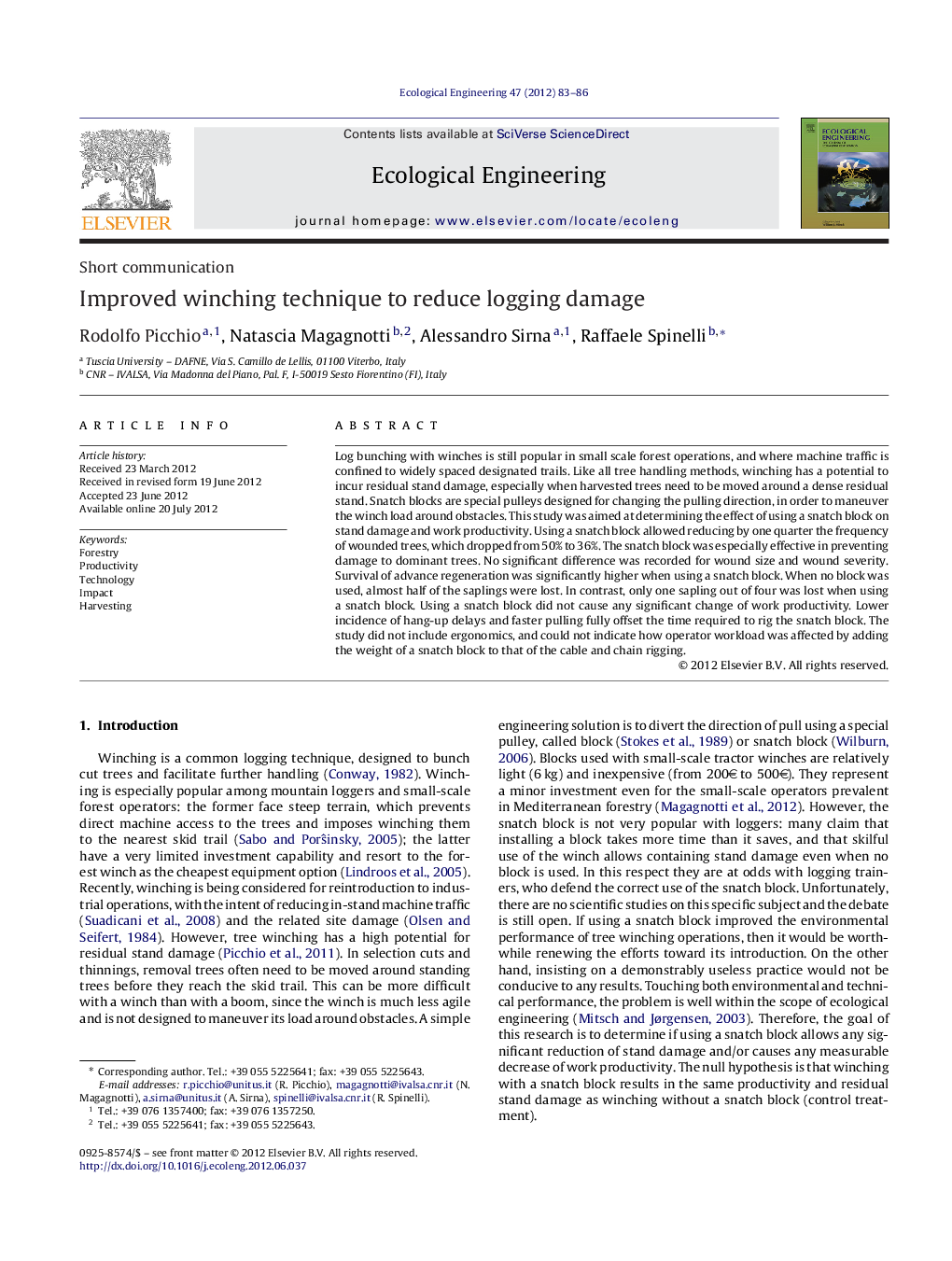| Article ID | Journal | Published Year | Pages | File Type |
|---|---|---|---|---|
| 4390002 | Ecological Engineering | 2012 | 4 Pages |
Log bunching with winches is still popular in small scale forest operations, and where machine traffic is confined to widely spaced designated trails. Like all tree handling methods, winching has a potential to incur residual stand damage, especially when harvested trees need to be moved around a dense residual stand. Snatch blocks are special pulleys designed for changing the pulling direction, in order to maneuver the winch load around obstacles. This study was aimed at determining the effect of using a snatch block on stand damage and work productivity. Using a snatch block allowed reducing by one quarter the frequency of wounded trees, which dropped from 50% to 36%. The snatch block was especially effective in preventing damage to dominant trees. No significant difference was recorded for wound size and wound severity. Survival of advance regeneration was significantly higher when using a snatch block. When no block was used, almost half of the saplings were lost. In contrast, only one sapling out of four was lost when using a snatch block. Using a snatch block did not cause any significant change of work productivity. Lower incidence of hang-up delays and faster pulling fully offset the time required to rig the snatch block. The study did not include ergonomics, and could not indicate how operator workload was affected by adding the weight of a snatch block to that of the cable and chain rigging.
